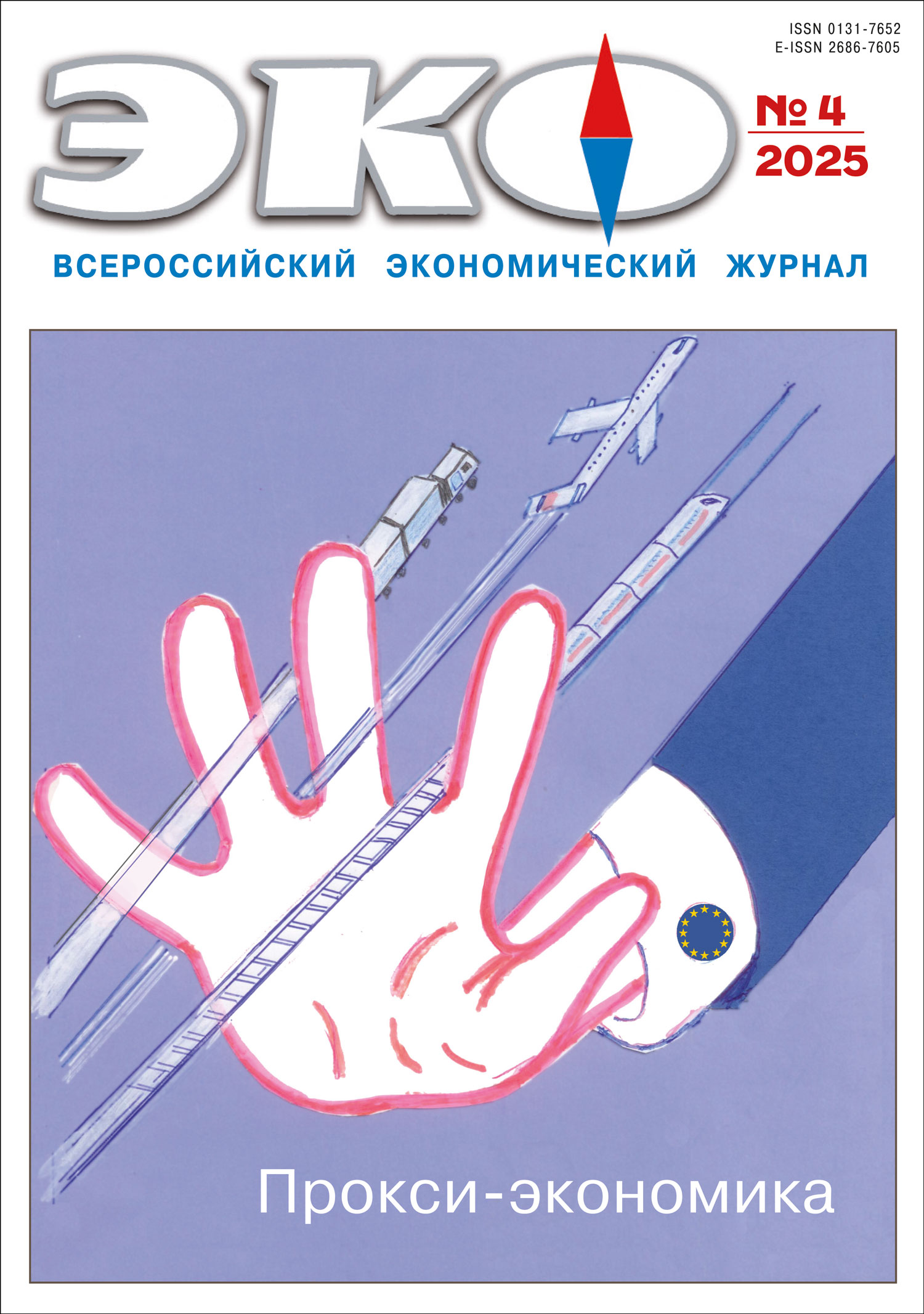FINANCIAL ECONOMY
Exogenous Shocks and Commercial Banks' Assessment of the Outlook of Russian Enterprises
Published 2025-07-24
Keywords
- Russian enterprises; exogenous shocks; risk assessment; banking system
How to Cite
1.
Pavlenko С. Exogenous Shocks and Commercial Banks’ Assessment of the Outlook of Russian Enterprises. ECO [Internet]. 2025 Jul. 24 [cited 2025 Nov. 10];55(4):94-111. Available from: https://ecotrends.ru/index.php/eco/article/view/4883
Abstract
The author considers the impact of exogenous shocks in 2014–2023 on the assessment by commercial banks of the prospects of Russian enterprises. In order to do this, the dynamics of credit rates for enterprises of different sizes is analyzed. It is shown that in 2022–2023 for the first time in the last 10 years large companies were considered as less stable and promising borrowers than small and medium-sized ones. Anti-crisis measures enacted by fiscal authorities and the government barely changed this new trend. This shock lasted longer than in the preceding years, demonstrating a “wave” character in form and substance, while the adaptability of large enterprises to each new wave of shocks is considered low. The results of the study may be applied in subsequent revision of support initiatives aimed at small, medium and large-scale enterprises.References
- Кузнецов Б.В., Голикова В.В. Руководители обрабатывающих предприятий России о санкционных ограничениях и уязвимости к ним // ЭКО. 2023. № 9. С. 33–51.
- Cortes, Kristle, Demyanyk, Yuliya, Li, Lei, Loutskina, Elena, Strahan, Philip E. (2018). Stress tests and small business lending. National bureau of economic research. Working Paper. No. 24365. March 2018, 34 p. https://nber.org/papers/w24365
- Ferrando, Annalisa, Popov, Alexander, Udelland, Gregory F. (2015). Sovereign stress, unconventional monetary policy and SME access to finance. European Central Bank. Working Paper. Series. No. 1820. June 2015, 30 p. Available at: https://ecb.europa.eu/pub/scpwps/ecbwp1820.en.pdf?a320272a931cefb4d7afdf7788db8304
- Ferrando, Annalisa, Forti, Grazzini Caterina (2023). Monetary policy shocks and firms’ bank loan expectations. European Central Bank. Working Paper. Series. No. 2838. August. 28 p. Available at: https://ecb/europa/eu/pub/scpwps/ecb.wp2838~ab7a1b1861.en.pdf?4a17b988d54ccd6384c1b815a8414bbc
- Galbraith, James K. (2023). The Gift of Sanctions: An Analysis of Assessments of the Russian Economy, 2022–2023. Institute for New Economic Thinking. Working Paper No. 204. April 2023, 16 p. https://doi.org/10.36687/inetwp204
- Gertler, Mark, Gilchrist, Simon (1991). Monetary policy, business cycles and the behavior of small manufacturing firms. National bureau of economic research. Working Paper. No. 3892. 40 p. https://nber.org/papers/w3892
- Gertler,, Mark, Glenn, R., Kashyap, Hubbard&Anil (1990). Interest Rate Spreads, Credit Constraints, and Investment Fluctuations: An Empirical Investigation. National bureau of economic research. Working Paper. No. 3495. 37 p. https://nber.org/papers/w3495
- Ivashina, Victoria, Kalemli-Ozcan, Sebnem, Laeven, Luc, Muller, Karsten (2024). Corporate debt, boom-bust cycles, and financial crises. National bureau of economic research. Working Paper. No. 32225. March 2024, 46 p. https://nber.org/papers/w32225.
- O’Toole, Conor (2014). SME Lifecycle and Non-Bank Financing in Europe. What Determines Usage. Cental Banc of Ireland.

